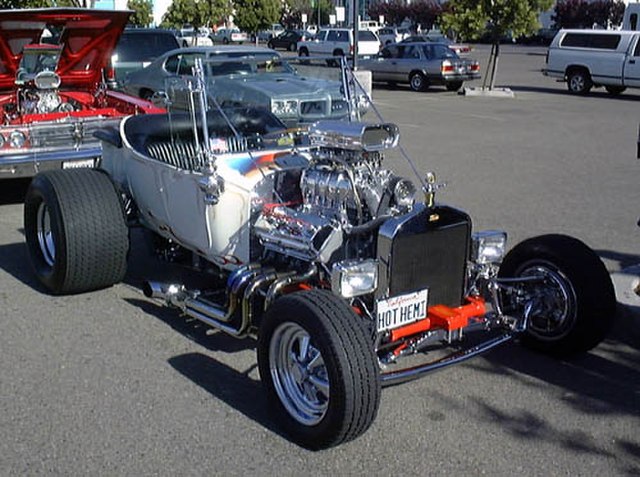A rat rod, as usually known today, is a custom car with a deliberately worn-down, unfinished appearance, typically lacking paint, showing rust, and made from cheap or cast-off parts. These parts can include non-automotive items that have been repurposed, such as a rifle used as a gear shifter, wrenches as door handles, or hand saws as sun visors. Whether or not so appointed, the rat rod uniquely conveys its builder’s imagination.
An example of a rat rod
Ford rat rod
1932 Ford coupe rat rod in Sheffield, Vermont.
Custom frame
Hot rods are typically American cars that might be old, classic, or modern and that have been rebuilt or modified with large engines optimized for speed and acceleration. One definition is: "a car that's been stripped down, souped up and made to go much faster." However, there is no definition of the term that is universally accepted and the term is attached to a wide range of vehicles. Most often they are individually designed and constructed using components from many makes of old or new cars, and are most prevalent in the United States and Canada. Many are intended for exhibition rather than for racing or everyday driving.
3-window highboy Deuce coupé with a traditional chop—dropped front axle, sidepipes, bugcatcher scoop (with Mooneyes cover) over dual quads on a tunnel ram—as well as less-traditional shaved door handles and disc brakes
A 1923 Ford T-bucket in the traditional style with lake headers, dog dish hubcaps, dropped "I" beam axle, narrow rubber, and single 4-barrel, but non-traditional disc brakes
T-bucket with early hemi, but aluminum radiator (rather than brass), rectangular headlights, and five-spokes (rather than motorcycle wheels) mark this as a later incarnation.
1932 3-window with a classic-style flame job and Moon tank, reminiscent of Chapouris' California Kid








